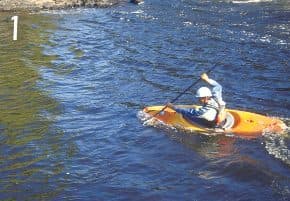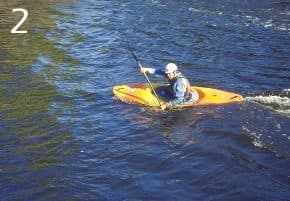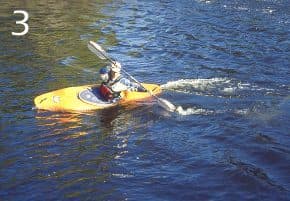Draw Strokes - The Gliding Draw
Once you're competently drawing your kayak laterally with draw strokes, it's time to look at the gliding draw. The gliding draw is a slight variation of the draw stroke that will let you carve turns when you've got forward momentum. It does this by acting like the skeg on a sailboat. It lets your kayak carve a smooth turn without spinning out and losing valuable forward momentum. Just as with downhill skiing or snowboarding, the key to carving a kayak is getting your boat on edge, and preventing your back end from sliding out. Practise carving on flatwater first by building up some forward speed then establishing spin momentum with a small sweep. Before your kayak has a chance to spin out, tilt it on edge and take a power stroke to give yourself a final boost and to keep your kayak carving. Using the same paddle blade, you'll then reach and plant a draw out to the side of your kayak, on the inside of your turn. Since the goal is to keep all your forward momentum, it should make sense that this draw stroke gets planted with the blade parallel to the direction of your kayak, so as to cause minimal resistance. To get the most power out of your draw, your paddle shaft should be held as vertically as possible and your chest should be rotated to face it. In order to keep a smoothly carving turn, plant your draw somewhere just behind your hip, but expect to need small adjustments. If your stern slides out, then your draw is too far forward. If your kayak starts turning in the opposite direction, then your draw is too far back.




Related Articles
Even though they are flipping over, missing their gates and failing their maneuvers, they still look…
As a member of the US Surf Kayaking Team I had the honor and privilege to compete in the world…
Eddy turns are the foundation for paddling in current, enabling you to enter and exit river and tidal…
Let's take a look at one of the strokes in the bracing family at the entry level. We have done High…


